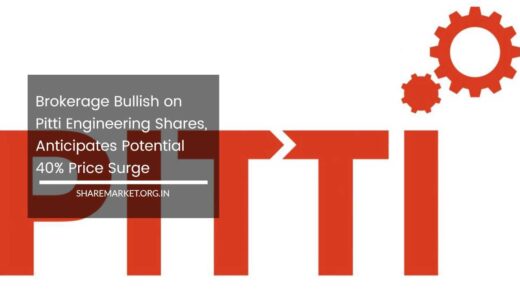Suzlon Energy Share Price Hits 5% Lower Circuit for Second Straight Day

Suzlon Energy Share Price
Suzlon’s Rollercoaster Ride: Profits, Setbacks, and the Road Ahead
Suzlon Energy Limited, a key player in the renewable energy sector, has recently undergone a remarkable and somewhat tumultuous journey in the stock market.
After an impressive six-day rally that saw Suzlon’s shares surge by over 13 percent, the company is now grappling with a three-day decline, with the stock hitting the lower circuit for the second consecutive day and experiencing a 12 percent drop.
This article delves into Suzlon’s recent market dynamics, its chart position, the factors influencing its recent volatility, and an exploration of its long-term prospects.
Suzlon’s Recent Performance:
As of the latest trading day, Suzlon’s shares reached the lower circuit for the second day in a row, marking a 5 percent decline to Rs 37.32.
This downturn follows a noteworthy achievement on November 17 when the stock reached a record high of Rs 44, a level not seen since 2011.
Despite the recent decline, Suzlon’s stock is currently positioned favorably on the charts, trading above key moving averages.
Chart Analysis:
A meticulous analysis of Suzlon’s chart position reveals that the stock is maintaining strength, remaining above crucial moving averages.
The 50-day moving average stands at Rs 30.83, the 100-day moving average at Rs 25.38, and the 200-day moving average at Rs 17.47.
Although the Relative Strength Index (RSI) has fallen to 56, indicating a move below the overbought zone, the stock’s RSI remains within a reasonable range, suggesting that it is not oversold.
Reasons Behind the Recent Surge:
Suzlon’s recent ascent can be attributed to several positive developments. Firstly, the inclusion of Suzlon’s S144-3 MW series wind turbines in the Ministry of New and Renewable Energy’s approved list of models and manufacturers is a pivotal development.
This approval opens the door for the commercial production of these turbines, signaling a promising future for Suzlon’s wind energy solutions.
Furthermore, Suzlon’s recent inclusion in MSCI’s Global Standard Index is considered a significant milestone.
Analysts speculate that this inclusion could attract an investment of 20-30 crore dollars in Suzlon, further solidifying its position in the global market.
Another crucial factor contributing to Suzlon’s recent success is its strategic financial moves. The company’s rights issue in 2022 and a successful Qualified Institutional Placement (QIP) have collectively rendered Suzlon debt-free.
With a healthy cash reserve of approximately Rs 600 crore, Suzlon is now in a robust financial position, providing ample liquidity for future endeavors.
Recent Downturn:
The recent decline in Suzlon’s stock can be attributed to profit-booking and a generally weak market sentiment. After an impressive six-day rally, investors may have opted to capitalize on the gains, leading to a temporary pullback.
Additionally, broader market conditions and external economic factors could be contributing to the overall negative sentiment, impacting Suzlon and other stocks in the renewable energy sector.
It’s important to note that short-term fluctuations are inherent in the stock market, and reactions to recent events may not necessarily reflect the long-term fundamentals of a company.
Long-Term Prospects:
While short-term market movements can be influenced by various factors, it is crucial to evaluate Suzlon’s long-term prospects.
The global push towards sustainable and clean energy solutions bodes well for companies operating in the renewable energy sector. Suzlon, with its focus on wind energy solutions, is poised to play a pivotal role in this transition.
The approval of its S144-3 MW series wind turbines positions Suzlon as a key player in the renewable energy market.
The growing emphasis on sustainable practices and the increasing demand for renewable energy sources create a favorable environment for Suzlon to capitalize on future opportunities.
Investor Sentiment and Considerations:
The recent volatility in Suzlon’s stock might raise concerns among investors. Lower circuits and rapid price movements can create uncertainty, prompting investors to reevaluate their positions.
However, it is essential for investors to consider both short-term fluctuations and long-term growth potential when making investment decisions.
Suzlon’s inclusion in MSCI’s Global Standard Index and the positive outlook for its wind turbines indicate that the company is on the right track.
Investors should stay informed about Suzlon’s strategic moves, product developments, and global market trends to make well-informed decisions aligned with their investment goals.
Final Remarks:
In conclusion, Suzlon’s recent journey in the stock market reflects the inherent volatility in the renewable energy sector.
While the recent decline is a notable event, it is essential to view it in the context of Suzlon’s overall positive trajectory.
The company’s inclusion in key indices, product approvals, and strategic financial decisions position it for future success in the dynamic and rapidly evolving renewable energy market.
Investors should monitor Suzlon’s developments closely, considering both short-term fluctuations and long-term growth potential.
As the world increasingly embraces sustainable energy solutions, companies like Suzlon may play a pivotal role in shaping the future of the renewable energy sector.
The recent rollercoaster ride in Suzlon’s stock serves as a reminder of the complexity and dynamism of the stock market, urging investors to approach their investment decisions with a balanced perspective and a focus on long-term value.

















